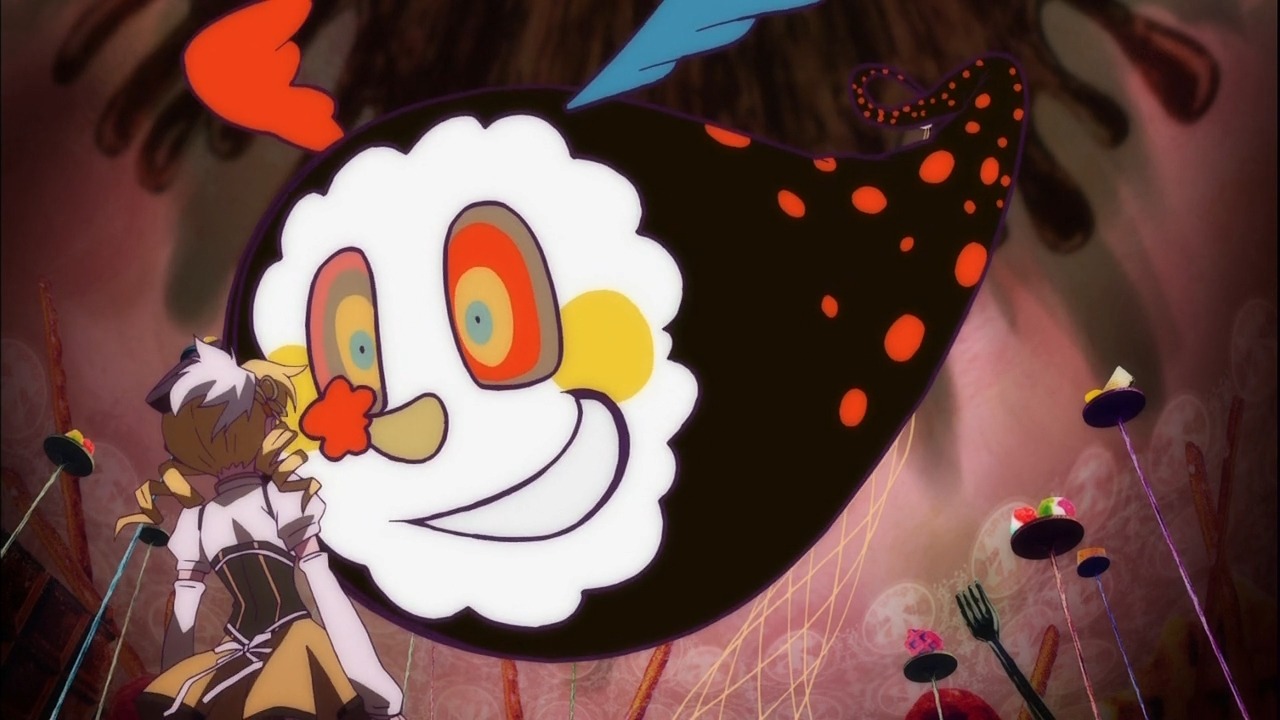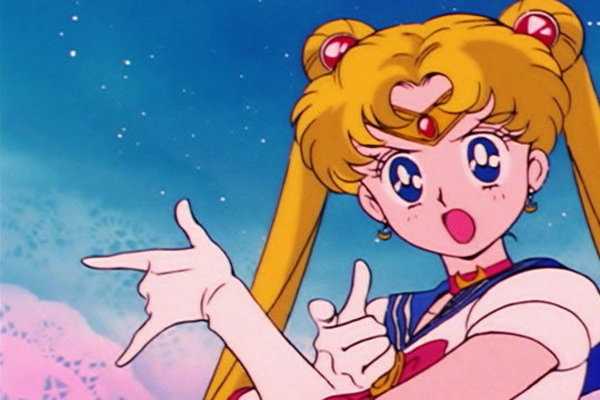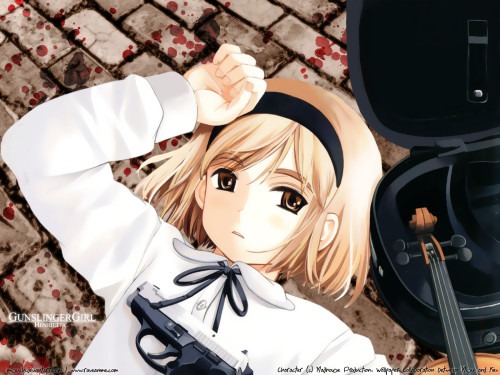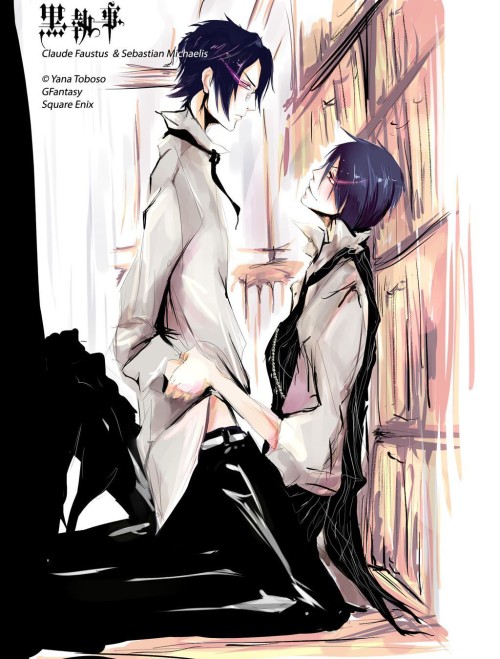Magical Girls puzzle me; they make me feel intrigued and desperate at the same time. That is not just because of my, admittedly, relatively limited experience with shōjo (‘[for] girls’) anime genres – until recently, I preferred adventure fantasy, which is sadly, but undoubtedly, shōnen (‘[for] boys’) material of the most popular order. No, Magical Girls confuse my sense of feminism and empowerment because I have experienced some as assertive, active, self-reliant girls, who are nevertheless trapped in the a spiderweb of the male gaze, where they are stripped (quite literally) of their agency and self-reliance and turned them into consumable sex objects. Voyeuristic cinematography contradicts narrative content.
I am going to explore this paradox dualism in the context I noticed it, the anime Magical Girl Lyrical Nanoha Vivid, which is the fourth anime series in the Nanoha franchise.[i] Rather than Nanoha herself, who is an adult and military officer by now, the show focuses on Nanoha’s adopted daughter Vivio and her friends. They are Magical Girls for sport and practice Strike Arts (a system of magical martial arts) with enthusiasm. Thus the series constitutes a crossover between the genres of Magical Girl and Sports anime, portraying the life and hobbies of school children in a world of both advanced technology and magic. Through the sport, Vivio befriends the mysterious streetfighter Einhart Stratos: like her a young girl linked to a historic era of magical war. They visit a training camp together, and eventually the four girls compete in a tournament.
The series portrays the girls’ interest in martial arts with surprising nonchalance, although it is made clear how sweet and loving and caring Vivio is despite her fierce punches.  Their training programmes contain jogging, sprints, sparring, and other activities which could be considered unfeminine, but they are never criticized for it. Indeed, the only slight criticism dealt out in the series is directed at Einhart, who takes fighting rather too seriously and has to learn over time how to relax and have fun. Overall, the girl’s determination to excel as athletes and magicians is received with admiration by parents and other adult figures.
Their training programmes contain jogging, sprints, sparring, and other activities which could be considered unfeminine, but they are never criticized for it. Indeed, the only slight criticism dealt out in the series is directed at Einhart, who takes fighting rather too seriously and has to learn over time how to relax and have fun. Overall, the girl’s determination to excel as athletes and magicians is received with admiration by parents and other adult figures.
Even more surprising and progressive I find the fact that Vivid portrays a queer family, or at least something that comes very close to it.  The initial Magical Girl, Nanoha, became close friends, after a few duels, with a fellow Magical Girl named Fate back in series 1. Subsequently they fought together in the magical military, and when they began to take care of Vivio in series 3, they shared the responsibility for her as well, although the relationship with Nanoha is clearly Vivio’s most important social bond. Still, she considers both women her mothers, and no eyebrows are raised at this arrangement; neither among her classmates nor any of the adult cast (which, admittedly, is mostly made up of Nanoha and Fate’s female friends and co-workers). Right to the end of the first episode, I was astonished how progressive this anime seemed to be.[ii]
The initial Magical Girl, Nanoha, became close friends, after a few duels, with a fellow Magical Girl named Fate back in series 1. Subsequently they fought together in the magical military, and when they began to take care of Vivio in series 3, they shared the responsibility for her as well, although the relationship with Nanoha is clearly Vivio’s most important social bond. Still, she considers both women her mothers, and no eyebrows are raised at this arrangement; neither among her classmates nor any of the adult cast (which, admittedly, is mostly made up of Nanoha and Fate’s female friends and co-workers). Right to the end of the first episode, I was astonished how progressive this anime seemed to be.[ii]
However, the other side was yet to come. As in (to my knowledge) all Magical Girl anime, the transformation sequences, in which the girls assume their battle costume and/or body, are a central part of the show, and as Vivio transforms into her battle form, feminist viewers are in for a kick to the gut. The camera caressingly sweeps over her behind twice, while her clothing dissolves, piece by piece, until she floats naked in the dark, hugging her magic device to her chest in a cringeworthy close-up. As her body magically matures to adult form and becomes enveloped in a ‘barrier jacket’, her breasts are featured in two more close-ups.[iii] SHE. IS. NINE. I would find such blatantly sexualizing imagery disturbing in any case, but it is exponentially viler if the victim is a grade-school child. This catering to the lowest impulses in certain male viewers (a ‘taste’ known as lolicon, Lolita complex) was nauseating – and it started me researching. There must have been something I was missing, something to explain this jarring contrast of empowered girls and these most despicable objectification they undergo as they access their power. Well. Here is what I found.
Susan Napier addresses the problem of sexualisation in her (highly recommended) study Anime from Akira to Howl’s Moving Castle. She describes shōjo, girl characters in Japanese media, as ‘characterized by a supposedly innocent eroticism based on sexual immaturity.’[iv] While such pandering to the shadier corners of the otaku (obsessive [usually male] fan of anime and video games) demographic seems most unsavoury to me, a bit of research into Magical Girl transformation sequences on youtube convinced me that it is also something of a genre tradition, featured in varying degrees in these series, even if they seem primarily designed to entice preteen girls into buying merchandise,[v] rather than being made mainly for otaku (the initial broadcast time gives a hint about the intended audience – for example, the summary episode 12.5 of Vivid ran between ten at night and four in the morning, according to the website).[vi]
The global tendency to show women as sexual objects was described as the concept of the ‘male gaze’ by Laura Mulvey in her 1975 essay ‘Visual Pleasure and Narrative Cinema’. She explains these patterns of objectification in western mainstream movies in reference to Sigmund Freud’s theories, with special focus on a) the concept of scopophilia or “pleasure in looking” at an image/character, and b) the process of identification with an image/character.[vii] Although the female form evokes desire, it also reminds the viewer unpleasantly of castration anxiety,[viii] Mulvey argues. I wonder if part of the Magical Girls’ objectification is a kind or reassuring reverse of this – powerful, self-reliant girls seem threatening, so they are displayed de-humanized as a ‘fetish object’ for an erotic gaze,[ix] in order to numb the feeling of threat they may evoke. In addition, Mulvey observes how the spectacle of the female body ruptures the narrative,[x] and indeed, the transformation sequences clearly occur outside the normal space and time of the story, in a timeless void; the action pauses to accommodate the show. This strategy also casts the viewing male as the one controlling time and narrative development.[xi]
However, Mulvey’s analysis is based on western cultural production and as such only applicable to Japanese material with certain restrictions. Anne Allison notes this in her analysis of the set-up, fetishistic display of female bodies even in anime and manga actually aimed at children, which she links to a discourse of passive spectatorship and control of both self and other: ‘the positioning of males to be masterful viewers but passive and consuming actors’.[xii] Therefore, such depictions of women serve as titillation for adult men and as an education about their later roles for children.[xiii] The Magical Girls’ transformation sequences can thus function as reassurance to male viewers that women will eventually stay put in their place as sexual objects – even if they wield magical power in their adolescence – and as an instruction for girls to conform as they mature. Fittingly, Susan Napier defines shōjo – the Japanese girl character – as ‘liminal identity between child and adult’[xiv], a special existence where transgressions are possible, as long as the traditional female identity is resumed with adulthood. The Magical Girl genre additionally places this temporary freedom in a fantastic setting,[xv] which further emphasizes the unattainability of real-life, lasting power and equality for women. Kumiko Saito notes how in early Magical Girl series, ‘the magical freedom of adolescence’ seems to be a prelude to ‘the gendered stage of marriage and motherhood’ – in other words, freedom is possible only outside restrictive gender roles, to which the early Magical Girls return at the end.[xvi]
In the Nanoha franchise however, magic – and the power and freedom from gender role restrictions associated with it – is permanent, as demonstrated by adult magical girls like Nanoha and Fate, and their shared parenting of Vivio. In addition, the military provides career opportunities not just for magicians but, to some extent, for regular women as well: they crew spaceships, work as technicians or fly helicopters, and even those who serve as administrators or personal secretaries are depicted as competent and dedicated to their profession, not as women only working to find a husband to settle down with.
Kumiko Saito traces the unholy union of children’s show and erotic ‘fanservice’ to the 1980s, where tropes of action and science fiction became incorporated in the genre – indeed, the extended transformation sequences of Magical Girls seem related to the mechanical device-setup sequences from shōnen anime.[xvii] Thus, she also locates the introduction of the objectifying male gaze (using the exact term) in this period, which alleviates the anxiety potentially generated by gender-bending plot elements, in the same way the fantastic setting downplays female agency.[xviii] In concurrence with Saito’s observations, a union of sexual and mechanical fetishism is very clear in the first three series of the Nanoha franchise, where the transformation sequences combine the above-mentioned sexualized scenes with shots of the Magical Girls’ staffs assembling.[xix] (Vivid is a different case because the main characters are either fist-fighters or use small melee weapons). The same fetishizing fragmentation is applied both to the girl’s body and to her mechanical weapon. This genre convention is not only ‘one of the most effective ways to show the details of the toy’ or costume most Magical Girl anime want their child audience to buy; it is also described by Mulvey as a means to turn a (woman’s) body into ‘a perfect product’, commodifying her.[xx] This process sanitizes the castration anxiety evoked by the female body because it ‘is fetishized into a phallic substitute, thereby turning the male’s attention away from the lack in her body and toward the fetish that is made of her body.’[xxi] The double substitution of body-as-fetish and weapon-as-fetish, I would argue, amounts to an overcompensation – along the lines of “If Magical Girls need that much: magic, transformation and weaponry, to be badass, than surely we have nothing to fear from normal women”. Female objectification and fetishism alleviates men’s own fear of their powerlessness in society.[xxii]
As Allison also points out, the limited (western) view of power Mulvey’s theory is based on – powerful viewer vs disempowered object of the gaze – fails to take into account both the passive role of the spectator and the power of active female sexuality, non-heterosexual lifestyles, and ‘forms of power, influence and authority that real women and real mothers in society exert.’[xxiii] Both the first and the latter two are present in the world of Vivid. However, the almost exclusively female society depicted in the series – also a common feature of Magical Girl shows creating ‘a pseudo-lesbian community in which girls enjoy a carefree everyday life’[xxiv] – can be understood either as a positive statement, that women are self-sufficient and in no need of men, or as a relegation of female independence to a utopia, as something only possible when men are removed from the picture. In addition, it creates a virtual harem for the otaku audience to choose the type of girl they prefer. Without interference by male characters, they can dream of having unlimited access to any and all of the girls on display. And there we go again with this oscillation between progressive and regressive facets which makes Magical Girl anime such a puzzling subject for me.
In the end, though, I want to read the story positively. By relegating males to the voyeuristic audience, the series transports the message that girls can fight, not for a male teacher, father or love interest, but for themselves, to reach a sense of fulfilment or to prove themselves – the same reasons which motivate the shônen heroes I usually engage with. Like women in our still sexist society, the girls are subjected to a sexualizing gaze, which violates their personhood even if they are unaware of it, but they struggle on nevertheless. In my opinion, any viewer decent enough to recognize them as full characters is bound to recognize their sexist treatment as injustice because of the contrast to how they are portrayed and act in the remainder of the show. I have voiced my horror at the child-abusive imagery above and now I want to focus on the fact that gendered characteristics and gendered genre conventions are mixed and disrupted, which leaves room for hope. Where the child-woman as ‘Battling Beauty at once fulfils the criteria for the [male audience]’s desires and [becomes] a figure that promises to liberate femininity’ from the very restrictions of gender which distort her portrayal,[xxv] there is potential for positive change, I believe. And on this hopeful note, I would like to end my musings on Magical Girls, at least for the time being.
Notes and References:
[i] This anime is an irregular Magical Girl show due to its strong borrowing from ‘male’ genres and its pitch to an adult audience, as evidenced by its late-night broadcast schedule. This was already very well explained here: http://www.animenation.net/blog/2012/03/23/ask-john-what-exactly-makes-lyrical-nanoha-more-adult-oriented.
[ii] For those interested in gender-bending and cross-gendered characters in the context of shôjo, I recommend Kotani, Mari, ‘Metamorphosis of the Japanese Girl: The Girl, the Hyper-Girl, and the Battling Beauty’ in Mechademia, 1, 2006, 162-169, and the Saito article (see note 5)
[iii] See https://www.youtube.com/watch?v=wTiwaZ9VLrI, from 0:30 onwards, if you have the stomach.
[iv] Napier, Susan J., Anime from Akira to Princess Mononoke: Experiencing Contemporary Japanese Animation, New York, Palgrave, 2005 (updated edition), 148.
[v] Saito, Kumiko, ‘Magic, Shōjo, and Metamorphosis: Magical Girl Anime and the Challenges of Changing Gender Identities in Japanese Society’, Journal of Asian Studies, 73.1, 2014, 143-164, 144.
[vi] http://nanoha-vivid.tv/news/index_cat.html?cat=Onair
[vii] Mulvey, Laura, ‘Visual Pleasure and Narrative Cinema’, Visual and Other Pleasures, Basingstoke: MacMillan, 1989, 14-16.
[viii] Mulvey, 19.
[ix] Mulvey, 21.
[x] Mulvey, 19.
[xi] Mulvey, 20.
[xii] Allision, Anne, ‘A Male Gaze in Japanese Children’s Cartoons, or, Are Naked Female Bodies Always Sexual?’, Permitted and Prohibited Desires: Mothers, Comics, and Censorship in Japan, Berkeley, Los Angeles & London: University of California Press, 2000, 31, 32-33, emphasis mine.
[xiii] Allison, 33, 47-48.
[xiv] Napier, 148.
[xv] Also mentioned by Saito, 143.
[xvi] Saito, 148. She goes on to discuss how in the 1990s, domestic concerns even invade the magical experiences of the Magical Girl, 157.
[xvii] See also Saito, 152.
[xviii] Saito, 145. She refers to critic Saito Tamaki for the claim that ‘anime and manga are produced and consumed within an imagined autonomous world of representations detached from what we generally recognize as reality’, 146.
[xix] Those of Nanoha and Fate come with moving, transforming parts and contain a revolver cylinder or a machine gun magazine from series 2 onwards; for an extreme example of the double fetish, see their dual transformation sequence from the movie version of series 2 here: https://www.youtube.com/watch?v=jFuYTiUDxl0 .
[xx] Mulvey, 22.
[xxi] Allison, 38.
[xxii] Allison, 39.
[xxiii] Allison, 39.
[xxiv] Saito, 159.
[xxv] Kotani, in relation to Revolutionary Girl Utena and Sailor Moon, 168.





